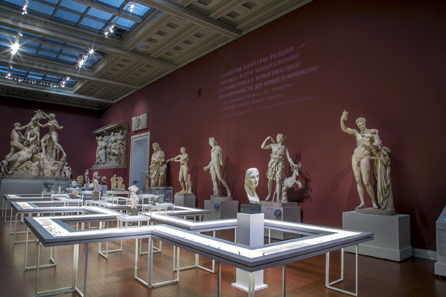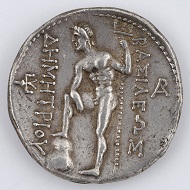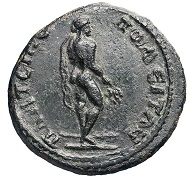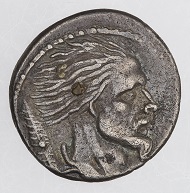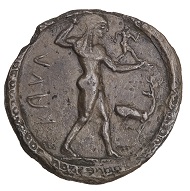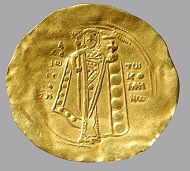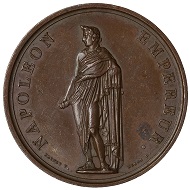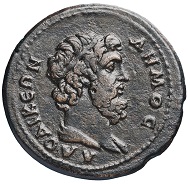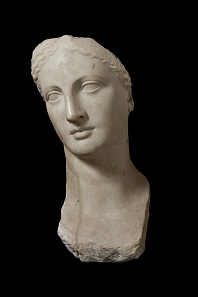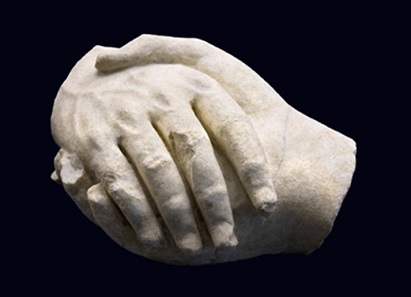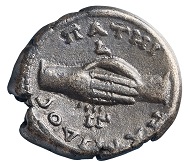July 14, 2016 – A periodical exhibition entitled “Heads and Tails – Tales and Bodies: Engraving the Human Figure from Antiquity to the Early Modern Period” is being jointly organized by the Pushkin State Museum of Fine Arts (Moscow) and the Benaki Museum (Athens), as well as the Welfare Foundation for Social & Cultural Affairs (KIKPE), Athens.
A view into the exhibition.
The exhibition in Gallery 24 of the Pushkin Museum will run through October 30th, 2016.
More and more coins can constitute the core of thematic exhibitions, despite their small size and some difficulties due mainly to the public’s unfamiliarity with them. The combination of coins with other artefacts in a symbolic dialogue has much to say to a wide audience.
The exhibition “Heads and Tails – Tales and Bodies: Engraving the Human Figure from Antiquity to the Early Modern Period” falls within this scope.
It focuses on the representation of the human figure on coins and other small coin-shaped artefacts through the ages, from Greek Antiquity to the Early Modern Period. In addition to pieces from the collections of the Pushkin Museum, it includes coins from the Benaki Museum (Athens), as well as from the KIKPE Numismatic Collection, which is kept on loan in the Benaki Museum.
With images that usually reflect the trends and achievements of large-scale sculpture, the surfaces of coins, medals, etc, have proved to be an extraordinary challenge for engravers and some truly remarkable artworks bear witness to the ways in which the difficulties in rendering (Gr. kallos en smikro, for ‘beauty in small-scale’) were overcome.
One of the main units of the exhibition focuses on anthropomorphism in relation to divinity, a concept that is exemplified quintessentially by the Greek spirit. Numerous representations are assembled, covering both the Greek and the Roman pantheon, as well as the emergence of Christian imagery.
Next comes the visualization of mortals, which displays considerable diversity, especially with regard to persons in power: ancient kings, queens, satraps, Roman and Byzantine emperors, Medieval rulers, …
… Early Modern monarchs and tsars, but also heroes, founders, eminent personages, and so on.
Other aspects of anthropomorphism include metamorphoses and personifications (river gods, fountain nymphs, cities, institutions, concepts, virtues, etc). A special section is devoted to certain artistic trends that can be traced on coins and similar artefacts (such as idealism and realism), spotlighting certain traits, such as stances or details of the human body. Last but not least, examined is the dissemination of the anthropomorphic tradition in a broader geographical context, based on coin imitations of various peoples (e.g. Scythians, Indo-Scythians, Arabs, Turkomans, etc), as well as Renaissance revivals and Early Modern perceptions.
The exhibition also takes into account the fact that the gallery which hosts it is surrounded by (plaster) casts of ancient Greek statues, as part of the educational character of the Pushkin Museum. Furthermore, the exhibition encompasses other media in which the human body is reproduced, such as statuettes, painted vases, icons, etc, selected from the Pushkin Museum and the Benaki Museum and employed as ‘frontispieces’. On the other hand, coins and the other miniature masterpieces consist the actual ‘milestones’ of the exhibition.
The exhibits, through the correlation of cultural and aesthetic affinity, offer visitors an innovative view of artistic trends of various eras. Moreover, intriguing links between iconography and an array of fields, such as mythology, religion, history, literature, philosophy, are showcased. The concept of this exhibition was proposed by Professor Vasiliki Penna (University of the Peloponnese) and was realized with the collaboration of Dr Sergei Kovalenko (Coins & Medals Department, Pushkin Museum) and Yannis Stoyas (KIKPE Numismatic Collection).
This event is incorporated in the festivities of the year 2016 as ‘Year of Greece’ in Russia. The joint exhibition will be accompanied by a brief catalogue in Russian and by a more comprehensive catalogue in English.
For further information on the exhibition you can visit the Pushkin Museum web page, the Benaki Museum website.




